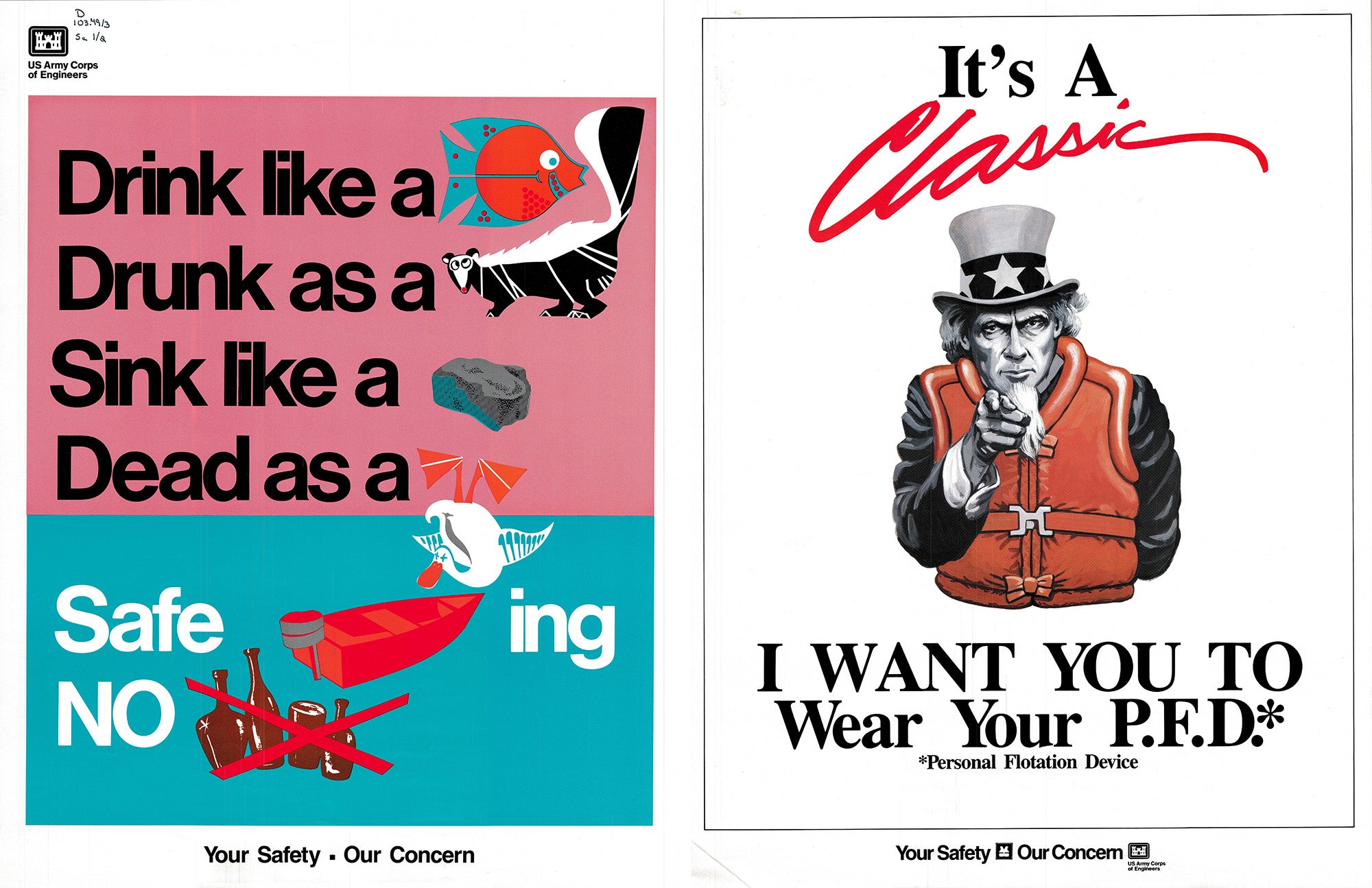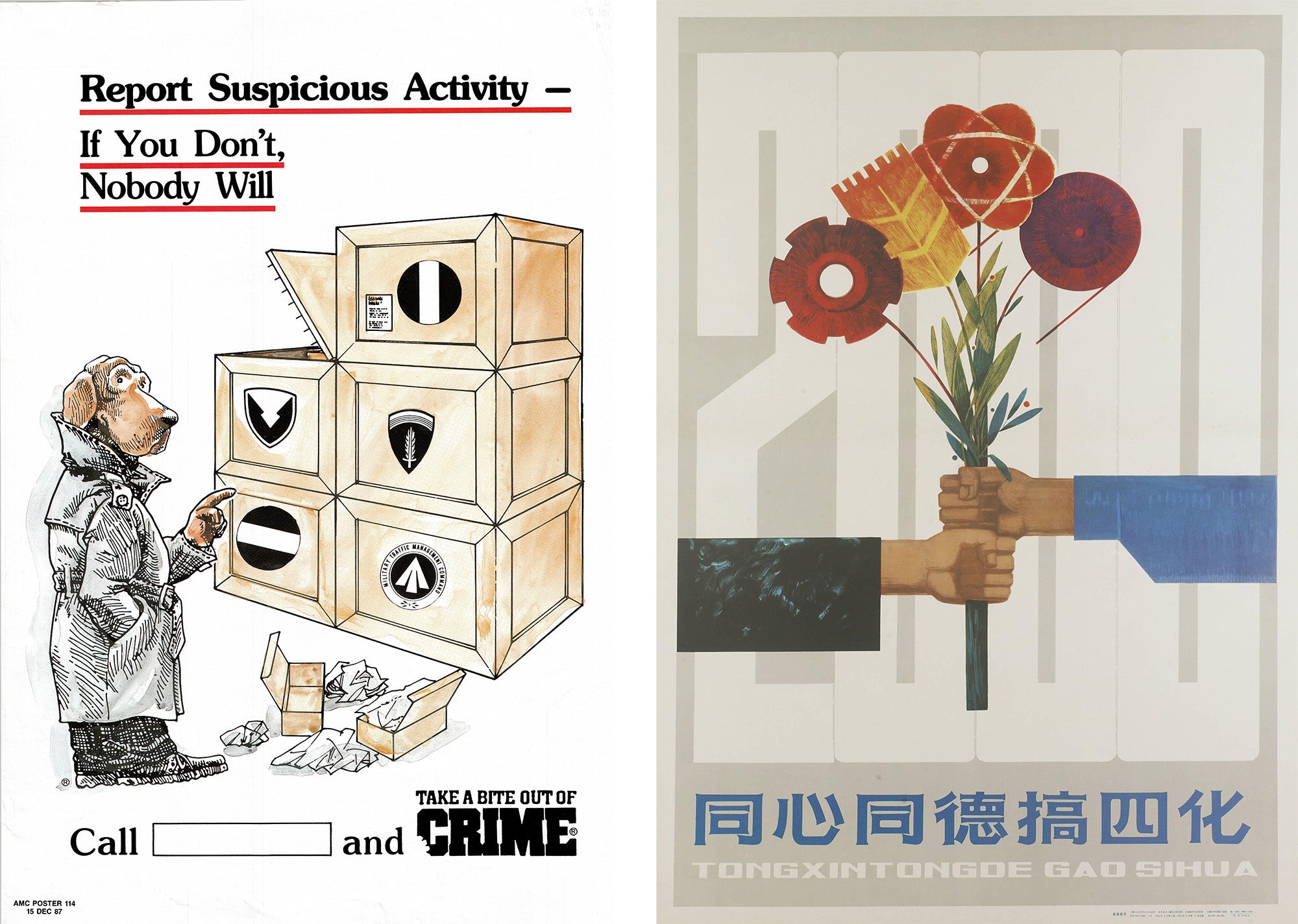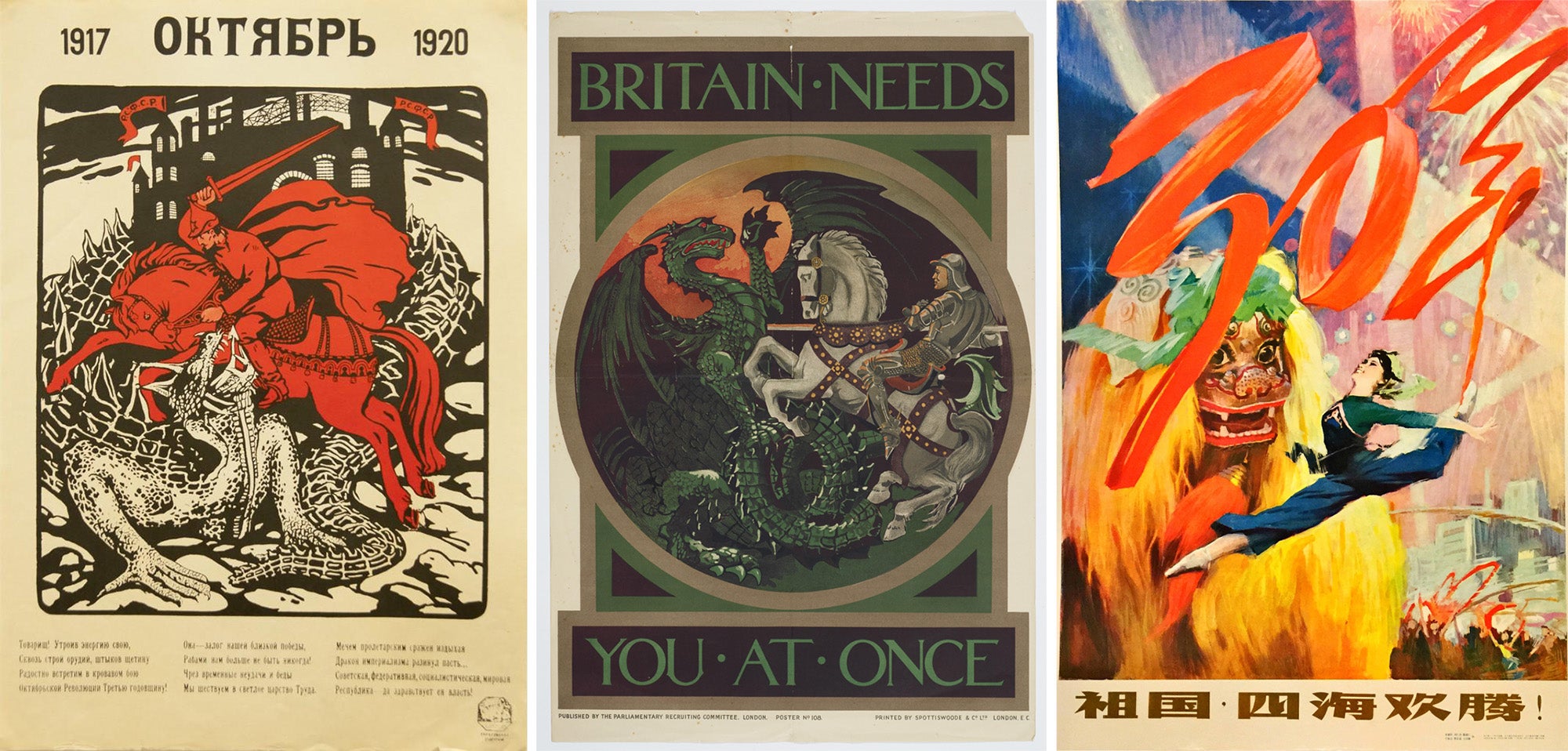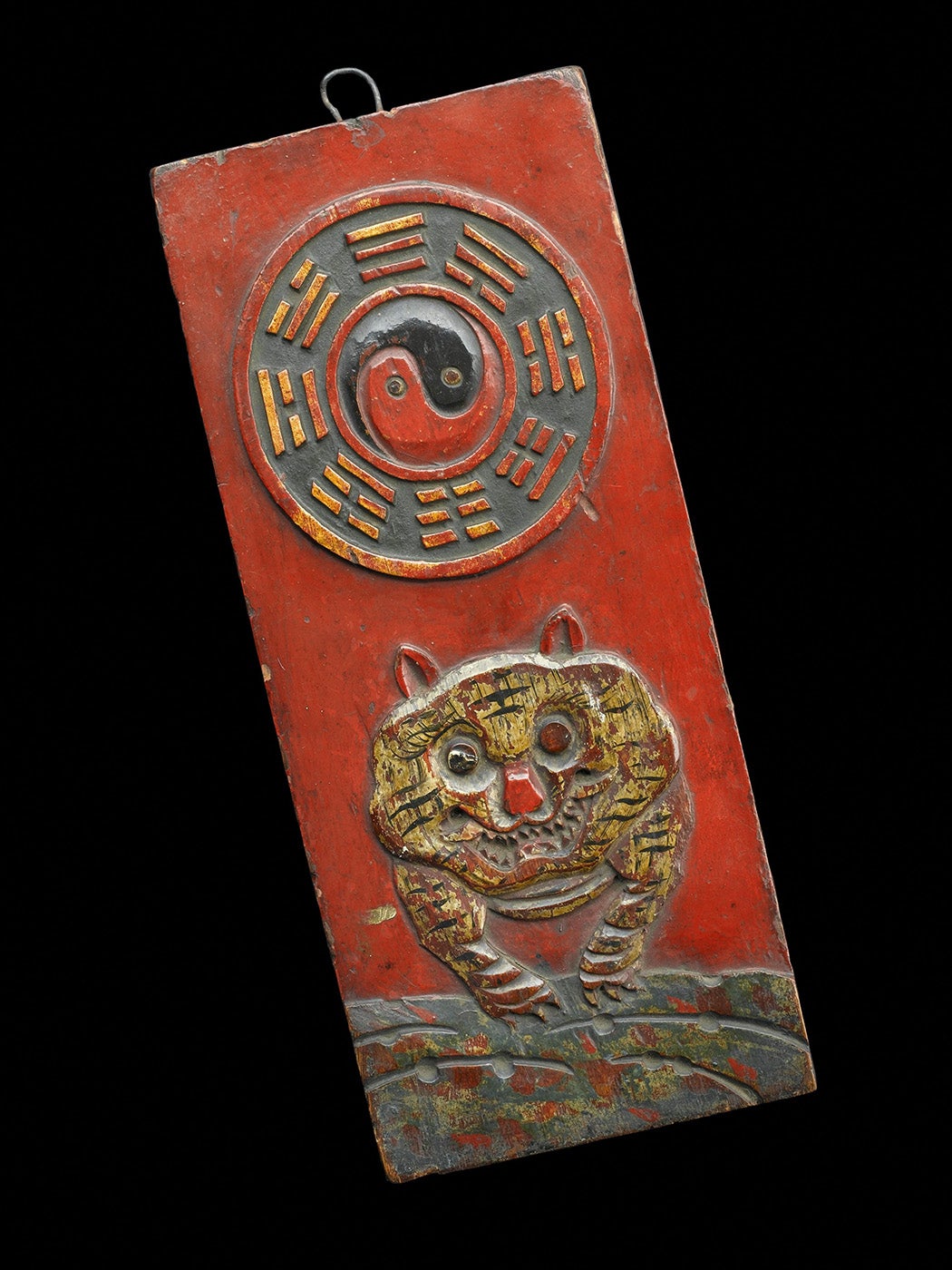What transforms an image into a symbol? In visual language, a symbol can be any object, character, color, or even shape that recognizably represents an abstract concept. The word recognizable is important here: any element in an image can be intended to be symbolic by the creator, but true symbols are things that do not need to be explained to be understood by the intended audience.
Weekly Newsletter
In this article, we’ll explore symbols through posters in several JSTOR Open Community Collections including the Claremont Colleges’ Twentieth Century Posters, SVA’s COVID Collection, the Wellcome Collection, and more. In many ways posters are an ideal format to begin thinking about symbols in visual media. Posters are often used for mass communication, relying on symbols to quickly disseminate a message without the need for extensive or explanatory text.
Symbol ≠ Icon
One of the first things to know about symbols is that the words symbol and icon are not interchangeable. Whereas icons are simplified representations of items in the world that often have a one-to-one translation of a particular word, symbols represent an idea or abstract concept. Take the following two posters promoting boating safety in the U.S. The first uses icons in place of a specific word—an image of a fish stands in for the word “fish”. In the second poster, Uncle Sam is being used as a symbol to communicate a sense of responsibility and duty to associate boating safety with these ideas.

Symbols frequently rely on different elements of design like color and shape to facilitate quick identification. The more widely understood the symbol, the more room for shape and color to vary before being unrecognizable. An example of this is general prohibition sign, a circle with a diagonal strike that indicates the abstract concept that some item or behavior is not permitted. This is such a widely used symbol that it can be applied in many different contexts and manipulated considerably before losing its symbolic meaning. In the images below, this symbol for “no” is applied widely while still communicating that something is not allowed. In the left image, the shape of the symbol is manipulated to look like a virus, but the distinct red color makes it instantly recognizable. This stands in contrast to the center image, where the color is now green but the shape is traditional and clear. Even in the image on the right, language does not stand in the way of understanding that viewers are being cautioned against the behavior in the photograph.

Global Symbols
Symbols rely on easy recognition on the part of their intended audience, but that audience can often vary in size and scope, from relatively small populations, like the U.S. Army Materiel Command, to entire countries. The strength of a symbol is not necessarily the size of its audience, but its clarity and instant understanding.

There are even symbols that are almost globally recognized. Often, universally understood symbols come from shared human experiences. One such symbol is a skeleton, usually symbolizing an omen of death or warning of deadly consequences. While the posters below depict skeletons in widely different cultural contexts, from New Delhi to Moscow, and various situations from war to alcoholism, the symbolic meaning of the skeleton can be read in much the same way without the need for additional information.

One’s proximity to the original context of a symbol affects how easy it is to recognize. Symbols meant to be read and understood by people like us in similar times periods, places, and situations tend to be quicker for us to comprehend.
Some Symbols Have a Second Life

Powerful symbols can even live more than one life. Sometimes when a symbol is closely tied to a particular meaning and easily recognizable it can be repurposed in new contexts, transferring its meaning from one situation to another. One widely recognizable symbol in American posters is Rosie the Riveter, a cultural symbol that became visually associated with a 1940s Westinghouse poster where a woman flexes her arm and declares, “We can do it!” Over the last eighty years, this image has been repurposed in wildly different contexts from banking to the Covid-19 pandemic. Despite different contexts and visual details, the symbol has staying power and continues to express initiative, empowerment, and independence.
Symbols and Cultural Context
Often, as with symbolic color associations, a symbol will be present across cultures and time periods but take on different meanings. Sometimes, these symbols are co-opted from one group by another that transforms its meaning, the swastika being a notable example. More frequently, though, symbols simply emerge independently or are spread unintentionally, taking on different meanings based on the culture in which they arise. Dragons provide a clear (and visually delightful) example of this. The dragon posters below span approximately sixty years, but the difference in symbolic meaning stems from their cultural context rather than temporal distance.

The first two seem quite similar at first glance: a mounted swordsman defeating a scaly dragon. Yet in the first, the red champion of socialist revolution is defeating a dragon symbolizing imperialist rule while the knight of the second is Saint George, the embodiment of faith and heeding the call to arms, triumphing over the devil in the symbolic form of a dragon. The third poster depicts a dragon that is visually distinct from the others. Here, the dragon symbolizes power, abundance, and China embodied. This dragon is not evil at all but rather the symbolic origin of the Chinese people and, at the time of this poster’s creation, a deliberately reframed symbol of good fortune in communist China.
* * *
Out of context, any of these symbols may be drastically misunderstood, but to the intended audience they form a shared foundation for visual communication and understanding. Recognizing the original context of symbols makes it possible to research and discover the intended message of symbols, unlocking their meaning for deeper understanding. In posters, this original audience is usually easy to identify based on text in and around the poster, but this is also true of investigating symbols in other contexts. Consider the amulet below and think about what your first interpretation of the symbols is based on your own culture and experiences. Compare this to the description of the symbolic imagery given in the metadata to the right of the image. What were the differences between your interpretation and the description? How might you go about finding more information to identify the symbolic meaning of the tiger that wasn’t mentioned in the description?

Are you an educator? Explore symbols in poster art with your students using this lesson plan.
Further Reading
Iconic images, symbols, and archetypes: their function in art and science
Are you an educator? Explore symbols with your students using this lesson plan:







